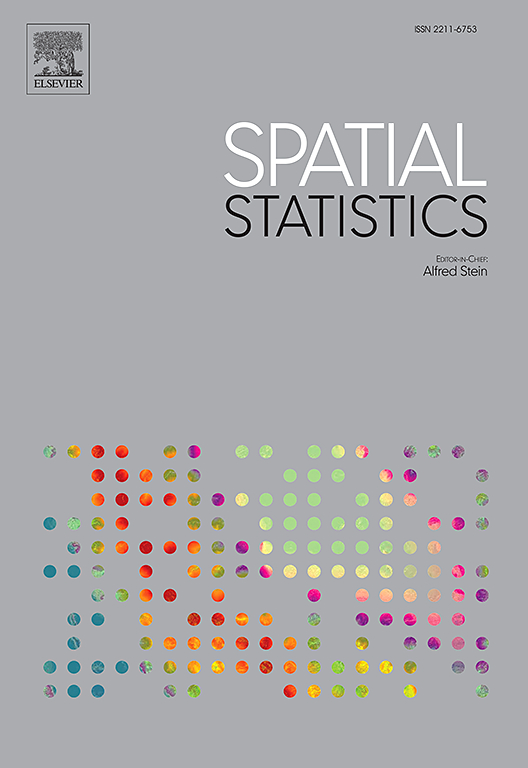基于脉冲触发二值伪随机序列的时空感受野估计统计显著性检验的快速计算
IF 2.5
2区 数学
Q3 GEOSCIENCES, MULTIDISCIPLINARY
引用次数: 0
摘要
背景:视觉神经元的时空感受野(strf)通常是用二值伪随机刺激序列的spike-triggered averaging (STA)来估计的。已经开发了一种精确的分析测试,称为STA-BPRS测试,以确定STRF估计中每个像素的统计显著性。然而,对于某些神经元来说,计算这个测试可能需要几分钟到几天,甚至更长时间。本文通过用正态分布近似STRF像素估计的零分布来加速STA-BPRS检验。这种方法的改进大大减少了计算时间,使大规模数据分析成为可能。结果在真实小鼠视网膜神经节细胞数据和合成脉冲序列数据上系统地验证了近似测试,表明它与精确测试产生相同的显著性阈值。对于神经元,精确的计算将会非常长(例如,数百年),近似的测试在几秒钟或几分钟内完成。与现有方法的比较很少有方法可以解决基于sta的STRF估计中逐像素的显著性问题。虽然存在像尖峰触发协方差这样的子空间方法用于STRF估计,但它们通常不能提供直接的体素或像素p值。该方法特别加速了基于精确分布的测试。结论和影响所提出的正态近似大大减少了计算时间,使高通量分析STRF映射从峰值数据。这一进展可能促进在大规模高密度电生理记录中更广泛地采用精确的strf统计测试。此外,快速检测重要的STRF特征可以促进闭环实验,其中刺激动态适应变化的STRF结构。本文章由计算机程序翻译,如有差异,请以英文原文为准。
Fast computation of the statistical significance test for spatio-temporal receptive field estimates obtained using spike-triggered averaging of binary pseudo-random sequences
Background
Spatio-temporal receptive fields (STRFs) of visual neurons are often estimated using spike-triggered averaging (STA) with binary pseudo-random stimulus sequences. An exact analytical test—called the STA-BPRS test—has been developed to determine the statistical significance of each pixel in the STRF estimate. However, computing this test can take minutes to days, or even longer, for certain neurons.
New method
Here, the STA-BPRS test is accelerated by approximating the null distribution of STRF pixel estimates with a Normal distribution. This methodological refinement significantly reduces computation time, making large-scale data analysis feasible.
Results
The approximate test is systematically validated on real mouse retinal ganglion cell data and synthetic spike train data, demonstrating that it yields identical significance thresholds to the exact test. For neurons where, exact computation would be prohibitively long (e.g., hundreds of years), the approximate test completes in seconds or minutes.
Comparison with existing methods
Few approaches address pixel-by-pixel significance in STA-based STRF estimates. While subspace methods like spike-triggered covariance exist for STRF estimation, they typically do not provide direct voxel-wise or pixel-wise p-values. The proposed method specifically accelerates an exact distribution-based test.
Conclusions and impact
The proposed Normal approximation drastically reduces computation time, enabling high-throughput analysis of STRF mapping from spike data. This advancement may foster broader adoption of precise statistical tests of STRFs in large-scale, high-density electrophysiological recordings. Moreover, fast detection of significant STRF features could facilitate closed-loop experiments where stimuli dynamically adapt to changing STRF structures.
求助全文
通过发布文献求助,成功后即可免费获取论文全文。
去求助
来源期刊

Spatial Statistics
GEOSCIENCES, MULTIDISCIPLINARY-MATHEMATICS, INTERDISCIPLINARY APPLICATIONS
CiteScore
4.00
自引率
21.70%
发文量
89
审稿时长
55 days
期刊介绍:
Spatial Statistics publishes articles on the theory and application of spatial and spatio-temporal statistics. It favours manuscripts that present theory generated by new applications, or in which new theory is applied to an important practical case. A purely theoretical study will only rarely be accepted. Pure case studies without methodological development are not acceptable for publication.
Spatial statistics concerns the quantitative analysis of spatial and spatio-temporal data, including their statistical dependencies, accuracy and uncertainties. Methodology for spatial statistics is typically found in probability theory, stochastic modelling and mathematical statistics as well as in information science. Spatial statistics is used in mapping, assessing spatial data quality, sampling design optimisation, modelling of dependence structures, and drawing of valid inference from a limited set of spatio-temporal data.
 求助内容:
求助内容: 应助结果提醒方式:
应助结果提醒方式:


